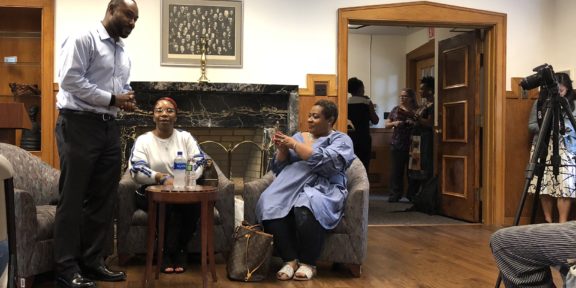On March 31, 2005 at approximately 9 a.m. Terri Schindler-Schiavo of Pinellas Park, Florida, died after 14 days without nourishment or water.
While the “Terri Schiavo case” has officially been closed since her death, the debacle concerning her right to live propelled debates involving everyone from the President the Pope.
Although her the famous images of Schiavo will no longer inundate our TV screens, this case has undoubtedly changed the meaning of life as we know it. Doctors diagnosed Schiavo as being in a persistent vegetative state consistently for the past 14 years–meaning she had little hope of recovering or regaining consciousness even though she technically was still alive. As we all know from the video images shown on TV, although brain dead, Schiavo was still able to make noises, move her head and seemed to follow stimuli.
Medical reports confirm that her brain had suffered enormous damage from a heart attack. As time passed, the portion of the brain that controls conscious thought, among other things, was literally gone, replaced by spinal fluid.
Since Schiavo first entered into a non-responsive state due to heart failure brought on by bulimia in 1991, her feeding tube had been removed three times. Her parents and her husband have battled on opposite sides of the court over every issue including her official medical state, her care needs, the cause of her accident and even her burial plans. By far the most important fight has been over what Schiavo would have wanted. If she had written a living will, many of these court cases would have been avoided.
When I asked other students if they knew what a living will was, I got mixed answers. Some assumed it was a “will to live” meaning that the purpose of the document is to say you would like to be kept alive if possible. Others assumed that it was similar to more popular types of wills that establish where to direct finances, estates and belongings after death, the only difference being that it is written for use in a case like Terri Schiavo’s, when you are still live, but unable to communicate your wishes.
A living will is defined as a legal instrument that is usually witnessed or notarized. The living will states that the person is appointing someone to direct their health care decisions, i.e treatments or resuscitation, if they are unable to do so.
Living wills are easy to prepare and several organizations like “Aging with Dignity” and state bar associations, say they have received thousands of calls and emails concerning living wills since the Schiavo case first gained notoriety. If you are interested in finding out specific rules concerning living wills in your state, visit https://www.legaldocs.com/htmdocs/livin_st.htm.
Our time on this earth is limited and no one can predict when or how we will die. The Terri Schiavo case may be a wake-up call for us all to be better prepared. Even younger people can face terminal illness or have an accident. Schiavo suffered her brain injury when she was only in her mid-20s.
One lesson I have learned from all of this is that it is best to prepare a living will or at the very least, make definite statements to loved ones about your wishes in the case of untimely death. As we have seen, anything less may not be enough and the meaning of life according to you will be left for someone else to surmise.



